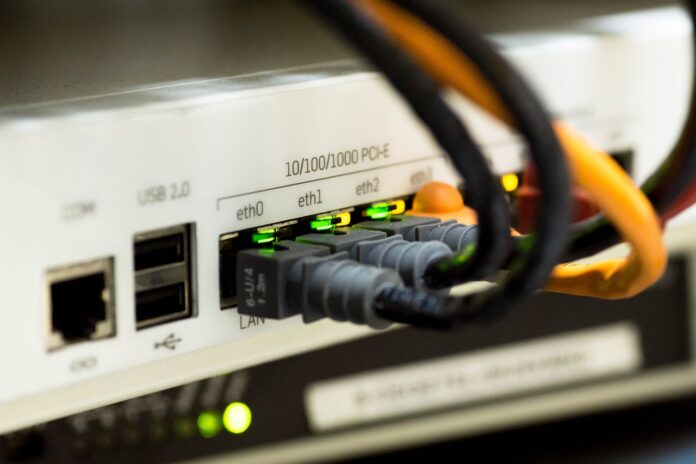In our ever-connected world, computer networks form the backbone of our digital infrastructure. They enable us to communicate, share information, and access resources across vast distances, revolutionizing the way we live and work. From the internet that connects billions of devices worldwide to local area networks (LANs) that facilitate communication within a single office, computer networks are at the heart of our technological ecosystem.
Table of Contents
Understanding Computer Networks:
The Building Blocks of Connectivity:
Computer networks are intricate systems composed of hardware and software components working together to transmit and receive data. These networks connect computers, servers, routers, switches, and other devices, forming a unified ecosystem. The primary objective is to facilitate seamless data transmission and enable collaboration between connected devices.
Local Area Networks (LANs):
LANs are networks confined within a limited geographic area, such as an office building or campus. They provide a reliable means of communication and resource sharing among computers and devices within the same physical space. LANs often utilize Ethernet cables or Wi-Fi connections to establish connections.
Wide Area Networks (WANs):
WANs span large geographic areas, connecting LANs across cities, countries, or even continents. The internet is the most prominent example of a WAN, allowing global connectivity. WANs employ various technologies, including routers, switches, and leased lines, to enable efficient data transmission across vast distances.
Network Protocols and Communication:
The Language of Networks:
To facilitate effective communication between devices, computer networks rely on protocols. Protocols are a set of rules and guidelines that govern data transmission and ensure devices can understand and interpret each other’s messages. Common protocols include TCP/IP (Transmission Control Protocol/Internet Protocol) and Ethernet.
Addressing and Routing:
Devices on a network have unique identifiers called IP (Internet Protocol) addresses, which serve as their digital address. IP addresses allow devices to locate and communicate with each other within the network. Additionally, routers play a vital role in directing data packets across networks, ensuring efficient routing and delivery to their intended destinations.
Network Topologies and Architectures:
Wired and Wireless Networks:
Computer networks can be wired or wireless, depending on the technology employed for data transmission. Wired networks use physical cables, such as Ethernet cables, to connect devices. Wireless networks, on the other hand, utilize radio waves or infrared signals for data transmission, enabling greater mobility and flexibility.
Client-Server and Peer-to-Peer Architectures:
Networks can be structured in different ways. In a client-server architecture, centralized servers provide resources and services to client devices, which request and utilize those resources. Alternatively, peer-to-peer architectures distribute resources among devices without a central server, promoting decentralized collaboration and file sharing.
Network Security and Challenges:
Ensuring Data Confidentiality and Integrity:
As networks facilitate the exchange of sensitive information, security becomes a paramount concern. Encryption protocols, firewalls, and virtual private networks (VPNs) help safeguard data from unauthorized access or interception, ensuring confidentiality and integrity throughout the network.
Network Scalability and Performance:
As the demand for connectivity and data transmission increases, networks must scale to accommodate the growing number of devices and users. Network administrators employ techniques such as load balancing, quality of service (QoS) management, and bandwidth optimization to maintain optimal performance and prevent bottlenecks.
Evolving Technologies in Computer Networks:
Cloud Computing:
Cloud computing has revolutionized the way networks operate and deliver services. By leveraging remote servers and virtualization technologies, cloud computing provides scalable resources and enables on-demand access to applications, storage, and computing power. This technology has transformed the way organizations deploy and manage their networks, offering flexibility, cost-efficiency, and enhanced collaboration capabilities.
Internet of Things (IoT):
The Internet of Things has brought a new dimension to computer networks by connecting everyday objects and devices to the internet. This network of interconnected devices enables seamless data sharing and automation, empowering applications in smart homes, healthcare, industrial settings, and more. However, it also poses new challenges in terms of security, scalability, and managing the vast amount of data generated by IoT devices.
Future Trends and Innovations:
5G and Beyond:
The rollout of 5G networks promises lightning-fast speeds, ultra-low latency, and massive device connectivity. This technology opens doors for transformative innovations, such as autonomous vehicles, augmented reality, and remote surgery. As 5G continues to evolve, its impact on computer networks will be profound, unlocking new possibilities and shaping the future of connectivity.
Software-Defined Networking (SDN):
SDN separates the network’s control plane from the underlying hardware, allowing administrators to centrally manage and configure network resources through software. This approach enhances network agility, scalability, and programmability, making it easier to adapt networks to changing needs and optimize their performance.
The Importance of Network Maintenance and Monitoring:
Network Monitoring:
Proactive network monitoring is crucial for ensuring optimal network performance, identifying and resolving issues promptly, and preventing potential disruptions. Network administrators employ various tools and techniques to monitor network traffic, analyze performance metrics, and detect anomalies or security threats, allowing them to take timely actions and maintain network reliability.
Regular Maintenance and Updates:
To keep networks secure and efficient, regular maintenance and updates are essential. This includes applying patches, upgrading firmware and software, and implementing security measures to protect against emerging threats. By staying current with technological advancements and best practices, network administrators can optimize network performance, enhance security, and improve the overall user experience.
Conclusion:
Computer networks have become the lifeline of our modern society, enabling seamless communication, collaboration, and access to information. As technologies continue to evolve, from cloud computing to IoT and 5G, the potential for innovation and transformative change within computer networks is immense. By understanding the fundamental concepts, staying abreast of emerging trends, and implementing robust security measures, we can navigate the intricate web of computer networks confidently and leverage their power to shape a connected future.
















